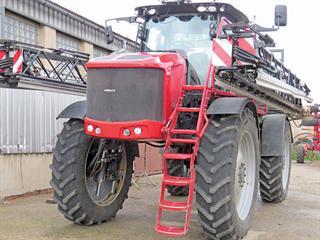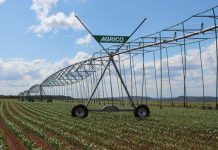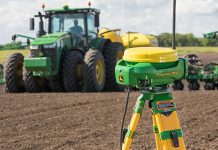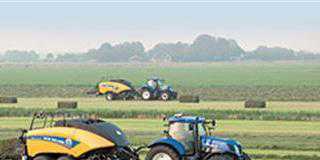
When Michael Horsch took over the 3 360ha AgroVation farm at Knežmost last year, there was a staff of 75 and a fleet of 45 old Zetor tractors. Under the guidance of director Christoph Foth, the farm now has three divisional managers and 31 workers.
The arable 3 000ha is currently in a crop rotation system comprising 1 250ha wheat, 750ha canola and 1 000ha maize, of which 850ha is harvested for grain and the rest made into silage for the herd of 560 Friesland cows.
The annual rotation sees wheat followed by canola, then wheat and two consecutive maize crops. Most of the work is done by two John Deere 9560RTs and one 8360RT, all tracked and fitted with GPS-controlled auto-steer. Wide implements are employed to ensure that planting and seeding is completed in the narrow windows between harvesting and optimum planting dates and, in the case of wheat, between the end of the harvest and the onset of winter.
To cope with the extremely unfavourable wet conditions this year, three 24 x 750mm-row Horsch Maestro planters were used to establish a total of 3 000ha of maize on two Horsch farms. Scheduled for harvest this month, the crop looks good, although the ground is still very wet. Individual lands are not large: the 130 lands at Knežmost average only 15ha each. They will be harvested by two Claas Lexion 780 combines with GPS-controlled auto-steer and 12m-wide, 16-row Geringhoff headers.
Testing the PT 330
Spraying the crops on the farm provided an excellent opportunity to test the new Horsch Leeb PT 330 self-propelled sprayer before its introduction at Agritechnica in November. The boom is 36m wide to match the 12m controlled traffic system.
Tracks are essential
Farm director Christoph Foth says his team would be unable to harvest in the prevailing wet conditions were the combines not fitted with tracks and four-wheel drive. The farm uses a 12m module ‘controlled traffic’ system. A spout extension on the Claas combine enables the tractor and Horsch Titan chaser bin to run in the same tracks as the combine.
High speed turnaround
Michael Horsch is highly creative when thinking of ways to speed up the logistics of planting. For example, the transfer auger on the de-mountable grain or fertiliser hopper, mounted on an Iveco Tracker 440 4WD truck, stays at a constant angle while the removable bin feeds the auger by being tipped.
In addition, bins for bulk fertiliser on a Claas Telehandler ensure rapid turnaround time on the land. Lucas Horsch has christened this the ‘Formula-1-Pit-Stop’ system. It incorporates a 10 000l mixer tank for crop-spraying, on a 4WD truck for fast transfer between farm and land.
Tined cultivators preferred
The Horsch Tiger cultivator works well in the heavy, cold soils – the four-bar design leaves ridges, which help drying and soil warming in the spring. The Terragrip tines have hydraulic overload protection with a release force of 800kg. With a working width of 6,4m, the cultivator requires 220kW to 400kW, depending on soil type and working depth.













